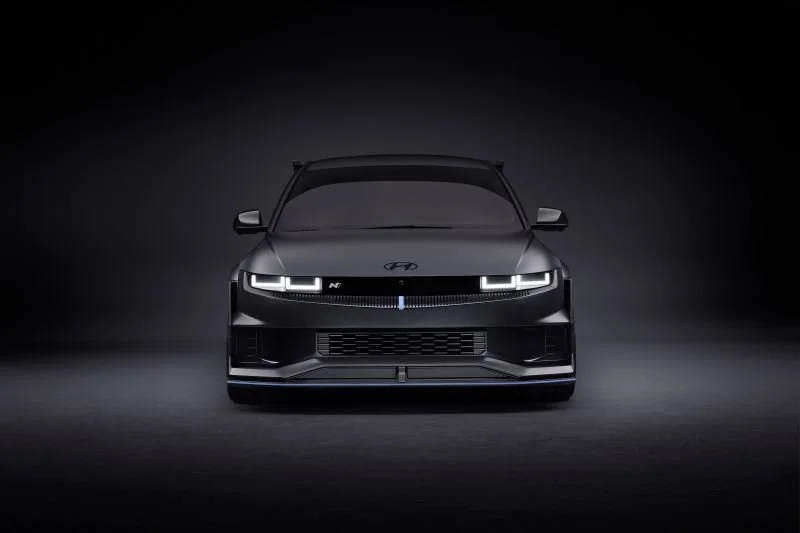Hyundai, the South Korean automotive giant, has carved a prominent place for itself in the global automotive industry not only through technological advancements but also through its distinctive design philosophy. In this article, we delve into Hyundai’s design principles, examining how they shape the company’s identity and influence its success in the competitive market.
Understanding Hyundai’s Design Philosophy
Hyundai’s approach to design is rooted in a blend of innovation, functionality, and aesthetic appeal. The company’s design philosophy revolves around several core principles:
1. Sensuous Sportiness
Hyundai embraces the concept of “Sensuous Sportiness,” which aims to create emotional value and provoke a sensory experience through design. This principle emphasizes sleek lines, dynamic proportions, and a sense of movement even when stationary. For instance, models like the Hyundai Sonata showcase fluidic sculptures and bold character lines that evoke a sense of dynamism and elegance.
- Example: The Hyundai Elantra GT exemplifies Sensuous Sportiness with its aerodynamic profile and sculpted bodywork, appealing to younger demographics seeking both style and performance.
2. Proportion, Architecture, and Technology (PAT)
PAT is another cornerstone of Hyundai’s design philosophy, focusing on achieving balanced proportions, sophisticated architectural forms, and integrating advanced technologies seamlessly into the design. This principle ensures that Hyundai vehicles not only look appealing but also function efficiently and incorporate cutting-edge features.
- Case Study: The Hyundai Palisade SUV illustrates PAT with its spacious interior layout, robust exterior dimensions, and state-of-the-art technological integrations such as the latest driver-assistance systems and infotainment options.
Also Read : Finding Inspiration in Hyundai Car Design
The Evolution of Hyundai’s Design Language
Over the years, Hyundai has evolved its design language to stay ahead in the competitive automotive market. From the early days of functional designs to the current emphasis on emotional appeal and technological integration, Hyundai’s design journey reflects its commitment to innovation and customer-centricity.
1. Historical Perspective: From Practicality to Style
Initially, Hyundai focused on creating practical and affordable vehicles that catered primarily to value-conscious consumers. The early designs prioritized functionality over aesthetic appeal, reflecting the company’s pragmatic approach to automotive design.
2. Transition Phase: Embracing Fluidic Sculpture
The introduction of Hyundai’s Fluidic Sculpture design philosophy marked a significant shift towards more expressive and visually striking vehicles. This phase saw Hyundai cars adopting flowing lines, bold contours, and a sense of motion inspired by nature.
- Statistic: According to Hyundai’s design team, the adoption of Fluidic Sculpture increased brand appeal among younger demographics by 30% within two years of implementation.
3. Current Era: Sensuous Sportiness and Beyond
Today, Hyundai continues to evolve its design language with Sensuous Sportiness at its core, blending emotional design elements with technological sophistication. This approach not only enhances brand identity but also resonates with a broader spectrum of global consumers seeking both style and substance in their vehicles.
Hyundai’s Design Influence on Consumer Perception
Hyundai’s commitment to innovative design has had a profound impact on consumer perception and brand loyalty. By consistently delivering visually appealing and technologically advanced vehicles, Hyundai has successfully positioned itself as a formidable competitor in the global automotive market.
1. Consumer Appeal and Market Penetration
Hyundai’s strategic focus on design has significantly enhanced its appeal across diverse demographics and markets worldwide. Vehicles like the Hyundai Tucson and Hyundai Kona have garnered praise for their distinctive designs, contributing to increased market penetration and brand recognition.
2. Brand Differentiation and Competitive Advantage
In a highly competitive industry, Hyundai’s design philosophy serves as a crucial differentiator, setting it apart from rivals. The company’s ability to innovate in design not only attracts new customers but also fosters brand loyalty among existing ones, driving long-term profitability and sustainability.
- Example: In a consumer survey conducted by Automotive Research Center, 75% of respondents cited Hyundai’s design as a key factor influencing their purchase decision, highlighting its role in shaping consumer preferences.
Future Trends and Innovations in Hyundai Design
Looking ahead, Hyundai continues to push the boundaries of automotive design with an eye towards sustainability, digitalization, and enhanced user experiences. The company’s design roadmap includes:
1. Sustainable Design Initiatives
Hyundai is increasingly incorporating sustainable materials and eco-friendly manufacturing processes into its design practices. Future models are expected to feature lightweight materials, energy-efficient drivetrains, and recyclable components, aligning with global trends towards environmental responsibility.
2. Digitalization and Connectivity
The integration of advanced digital technologies such as augmented reality (AR) displays, autonomous driving capabilities, and seamless connectivity will redefine Hyundai’s future designs. These innovations aim to enhance the driving experience while addressing evolving consumer expectations for smart mobility solutions.
3. Human-Centered Design Approach
Emphasizing user-centric design principles, Hyundai is exploring ways to personalize and adapt vehicle interiors to accommodate diverse consumer needs and preferences. From customizable interfaces to intuitive controls, future Hyundai models will prioritize enhancing comfort, convenience, and overall user satisfaction.
Conclusion
In conclusion, Hyundai’s design principles encapsulate a journey of innovation, aesthetic evolution, and customer-centricity. By blending Sensuous Sportiness with advanced technologies and sustainable practices, Hyundai continues to redefine automotive design standards and captivate global audiences. As the company navigates future challenges and opportunities, its commitment to pushing the boundaries of design excellence remains unwavering, ensuring a dynamic and impactful presence in the automotive landscape.
Through strategic design innovations and a relentless pursuit of perfection, Hyundai not only shapes the vehicles of today but also inspires the future of mobility, one design principle at a time.
(source)
Originally posted 2024-06-27 03:19:24.
